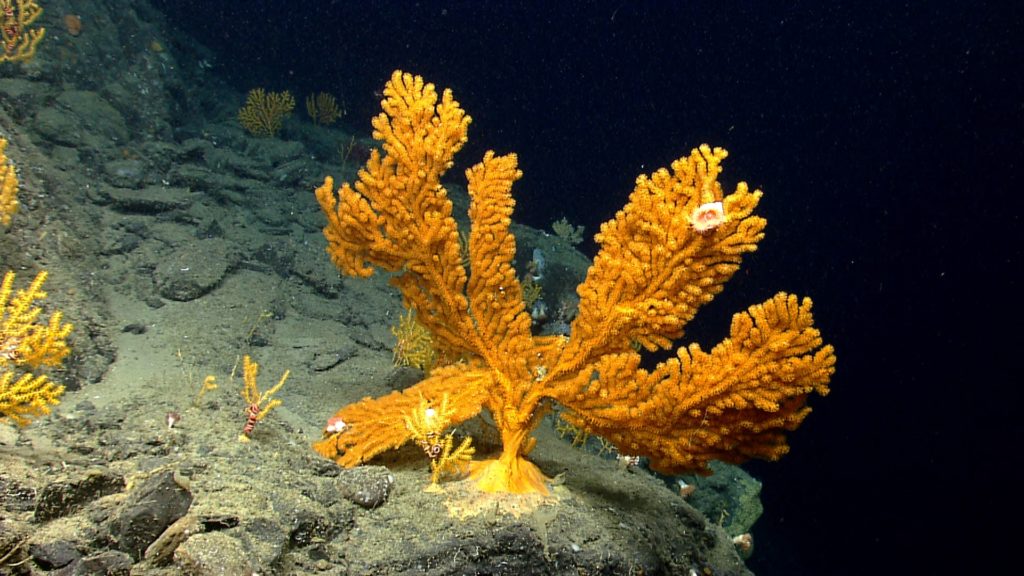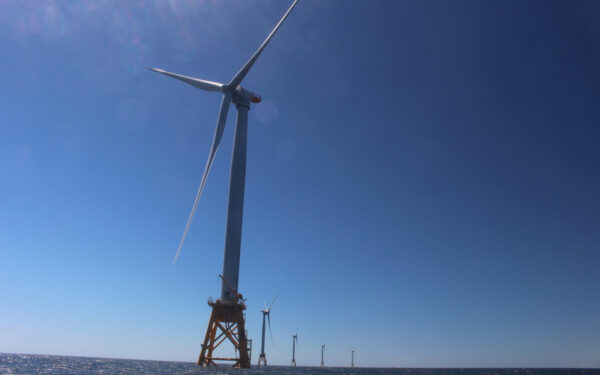
I recently returned from a trip to Washington, D.C., where I met with senior officials at the Departments of Commerce and Interior to urge the continued preservation of the Northeast Canyons and Seamounts Marine National Monument – the only such monument in the Atlantic and an ecological gem of immense significance.
Our Nation’s Natural Treasures are Under Attack
At the direction of two executive orders issued by President Trump earlier this year, Secretary of the Interior Ryan Zinke and Secretary of Commerce Wilbur Ross are conducting separate reviews of the nation’s national monuments – the first salvo in what is expected to be a long, protracted, and unjustified assault on America’s beloved public lands and seas.
Squarely in the crosshairs of the Trump Administration is the Antiquities Act, the law that gives authority to the President to protect America’s special places and the natural and historical heritage they embody. Since the Act was signed into law by President Teddy Roosevelt in 1906, sixteen presidents (eight Republicans and eight Democrats) have used this authority to protect places of outstanding historic and scientific interest.
From the Grand Canyon to the Grand Staircase Escalante to Katahdin Woods and Waters in Maine and the Northeast Canyons and Seamounts right here New England – our nation’s monuments are part of what makes America great.
While the Antiquities Act gives the President the authority to designate monuments, it does not give the President the authority to revoke or modify one.
New England’s Only Marine Monument Supports Coastal Communities
New England’s Northeast Canyons and Seamounts Marine National Monument is an extraordinary underwater wonder. Located approximately 130 miles off the coast of Cape Cod, the Monument encompasses 4,913 square miles of ocean and features three spectacular underwater canyons and four ancient volcanos known as seamounts. It is home to an incomparable array of marine life, including endangered whales, sea turtles, seabirds, and some 73 species of rare deep-sea corals that are protected from commercial extractive activities.
The refuge provided by the monument safeguards fragile and interconnected ocean ecosystems and improves ocean resilience to warming temperatures and other ecological threats. It also helps to sustain New England’s coastal economy: tourism, recreation, fishing, and other sectors that depend on abundant fish and wildlife.
New England’s ocean supports more than 250,000 jobs and brings in $17.4 billion in economic activity. Nearly three-quarters of these jobs and $7.9 billion of this economic activity come from the tourism and recreation alone, including the whale-watching, recreational fishing, and seabird-viewing industries. A healthy ocean with working ecosystems is paramount to ensuring these economic drivers continue to thrive.
Voted Most Popular: National Monuments
To date more than 650,000 comments have been filed in strong support for the nation’s marine monuments and sanctuaries. Overall, the Department of Interior received more than 2.7 million comments during a 60-day public comment period – a record-breaking response – with more than 98 percent of all comments received expressing support for maintaining national monuments.
It’s not surprising that Americans have responded so positively: Polling data consistently has shown over the years that people are overwhelmingly in support of setting aside special areas as monuments and national parks. Here in New England, 80 percent of Massachusetts and Rhode Island residents polled last summer favored permanently protecting deep-sea canyons and seamounts.
So why is the President taking aim at New England’s only marine monument – and one that encompasses a little more than 1 percent of U.S. Atlantic waters?
Surely it’s not to protect the small number of commercial fishing operations in the area. The half a dozen or so red crab and lobster vessels active in the monument area have already been provided an unprecedented seven-year grace period to move their operations outside of the monument where they can continue to fish. And protected areas typically experience an increase in abundance of fish, which spill over into areas outside the monument – benefiting fishermen. Moreover, the destructive activities of commercial fishing gear is in no way compatible with the fragile deep sea coral ecosystems and astounding abundance and diversity of marine mammals that are the hallmarks of the Northeast Canyons and Seamounts.
And we hope it’s not in the name of allowing the local fishery management council to manage the monument’s activities. To put such a responsibility in its hands would be beyond the scope of what the nation’s eight regional fishery councils were set up to do. Fishery management councils can not, and should not govern the activities of the entire ocean. Our regional council has a mandate to sustainably manage fish stocks in New England (some of these efforts have been successful, some such as that for Atlantic cod have been a complete failure) and that’s where their efforts should remain.
If Secretary Zinke and Secretary Ross take the time to review the hundreds of thousands of comments filed in support of the Northeast Canyons and Seamounts and the scientific analyses detailing the significant ecological value and scientific interest of the monument, they should conclude that the Northeast Canyons and Seamounts should remain as it is – protected forever for you and me and generations to come.
‘From sea to shining sea’ includes the sea. Sign on here (through August 15) if you agree!




